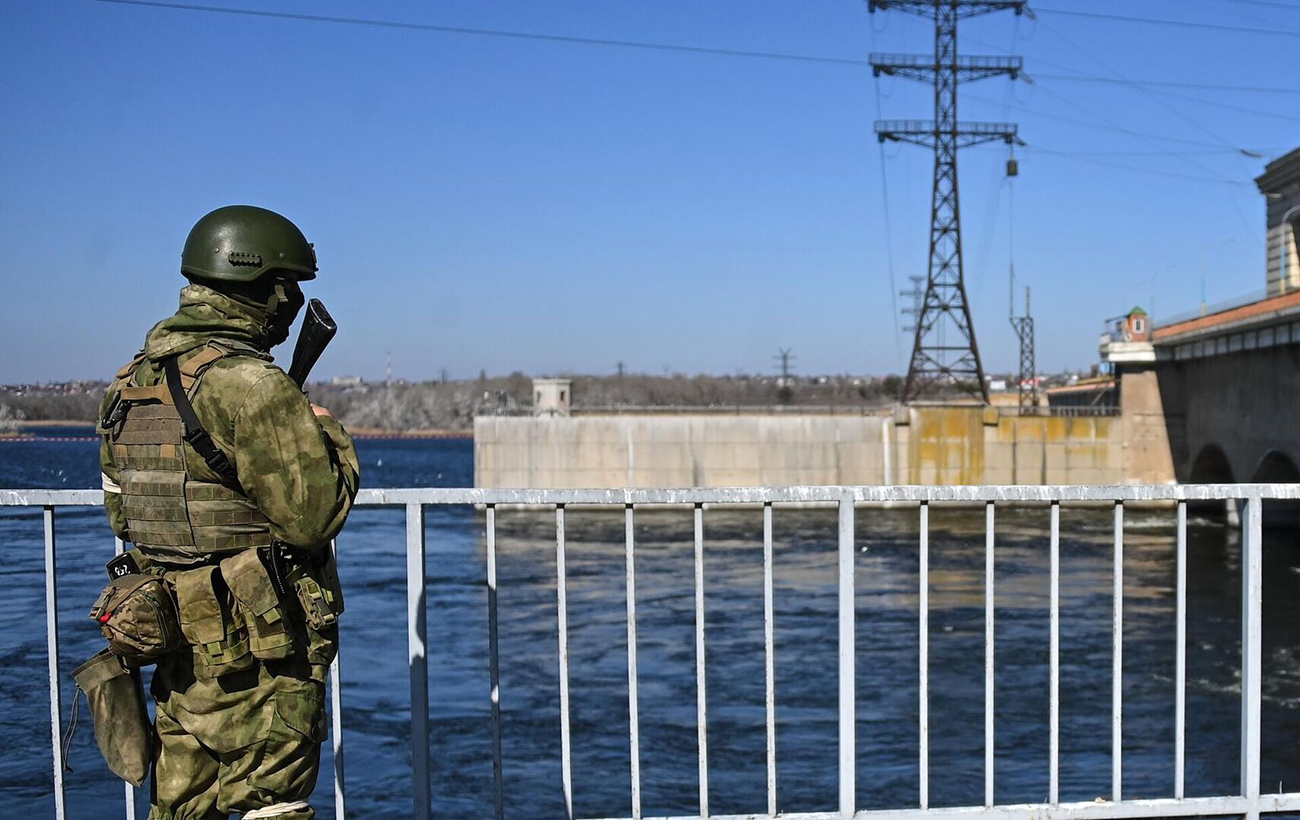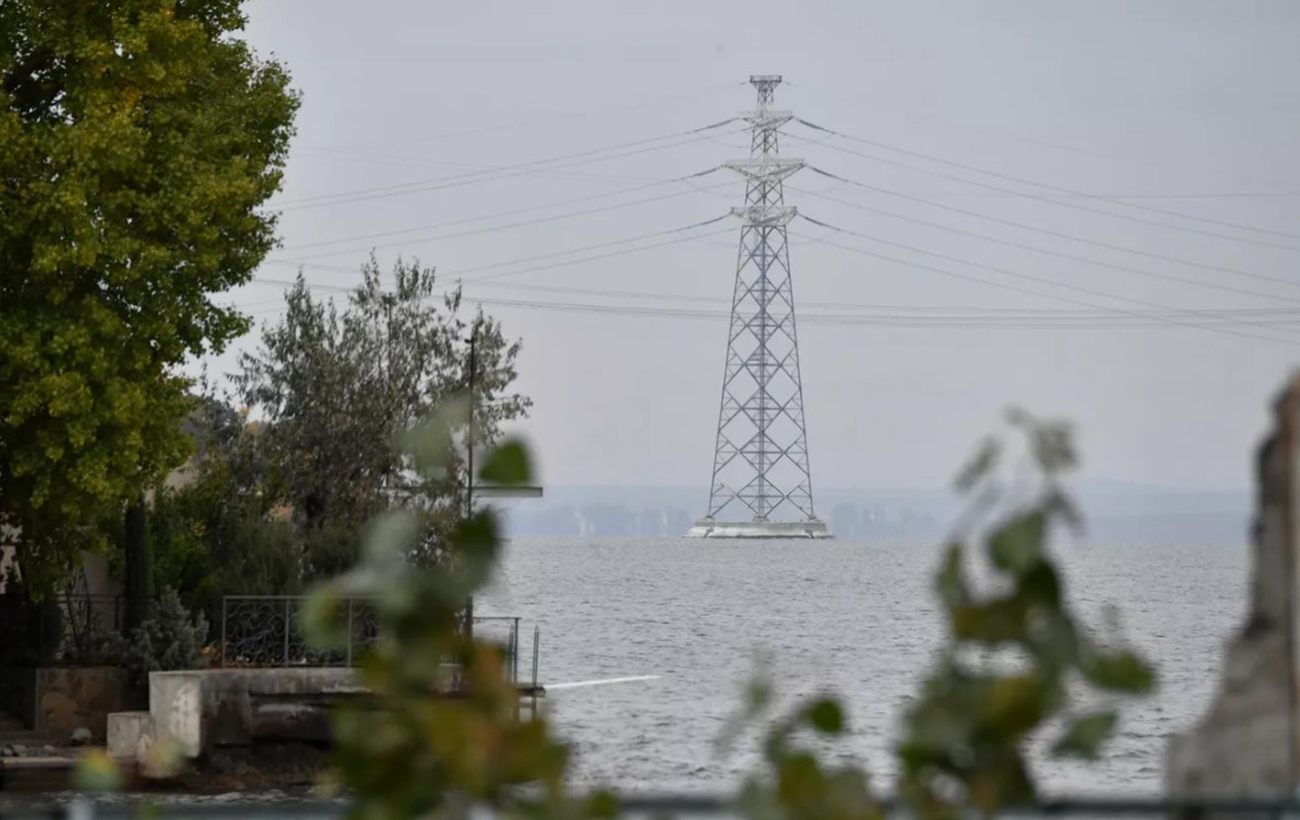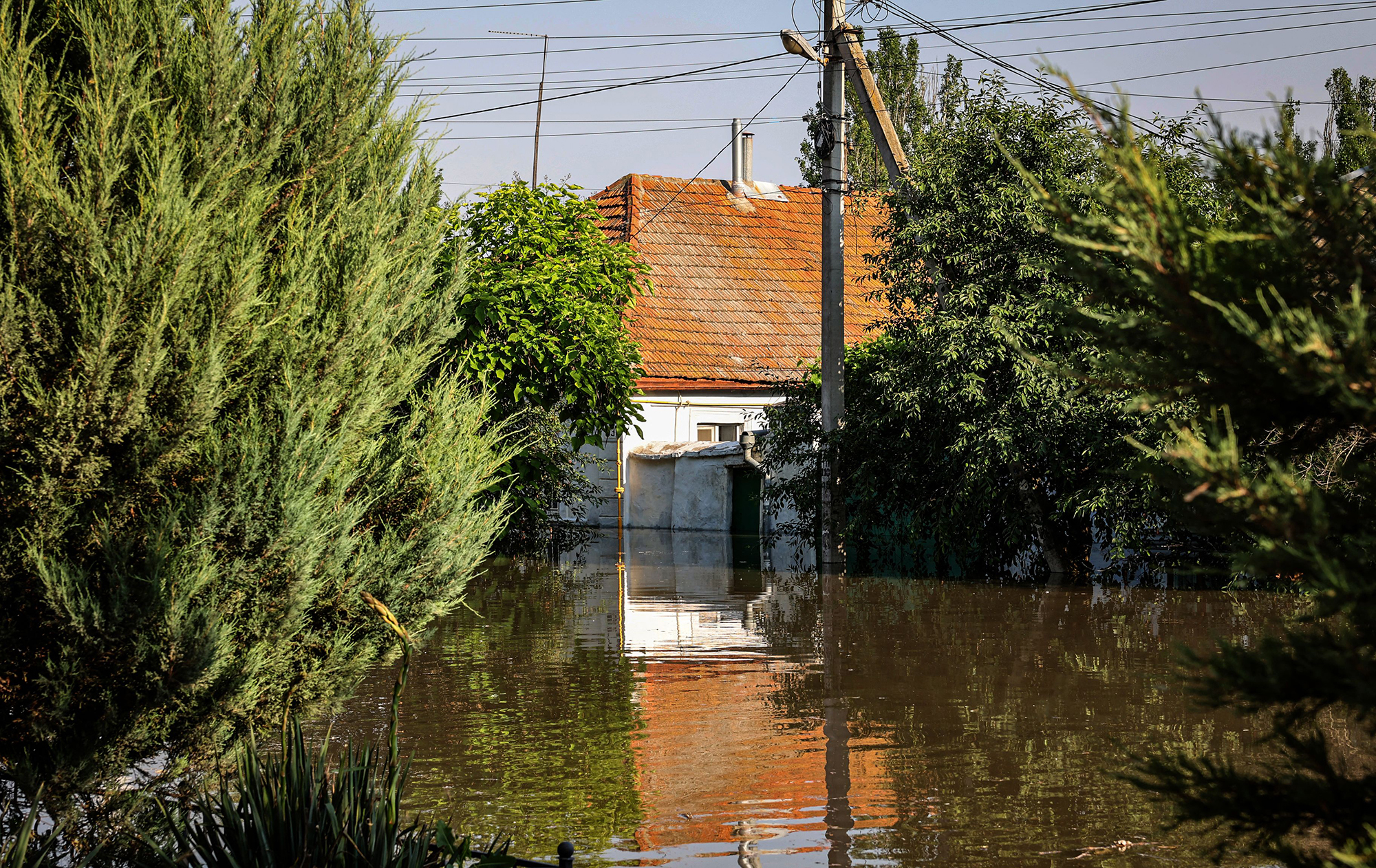Kakhovka dam collapse: humanitarian and environmental disaster
 The Russians blew up Kakhovka HPP (Russian media)
The Russians blew up Kakhovka HPP (Russian media)
Russian troops blew up Kakhovka hydroelectric power plant. What are the threats to the ecosystem and residents?
On June 6, Russian forces destroyed the Kakhovka hydroelectric power plant, which has been under occupation since last year. According to “Ukrhydroenergo”, Ukraine’s main hydropower generating company, the explosion occurred in the engine room around 3:00 AM. The plant is destroyed and not subject to restoration. About 80 settlements in the Kherson, Dnipropetrovsk, Mykolaiv, and Zaporizhzhia regions are at risk of flooding.
“We consider this to be a terrorist act,” said Ihor Syrota, CEO of “Ukrhydroenergo”, adding that both the plant and the dam were destroyed. He claimed that the mining of the plant became known last year. “Since October, the plant has been occupied and served as a headquarters for Russian troops. We got the information that explosives were being loaded onto the plant. And the X-hour came last night,” he stated.
Currently, the water level in the Kakhovka reservoir is rapidly decreasing, and the evacuation of people from potential flood areas continues.
Additional Threat: Risks for the Zaporizhzhia nuclear power plant
The Kakhovka hydroelectric power plant was built in the mid-1950s to provide water and regulate the flow of the Dnipro River for the needs of the energy sector, to supply water to the population and industry, and to irrigate arid regions of southern Ukraine. Moreover, it was used to supply electricity to the Kherson and Zaporizhzhya regions.
The hydroelectric power plant, located 5 kilometers from the occupied city of Nova Kakhovka, was the last “step” of the Dnipro cascade of hydroelectric plants.
The uncontrolled decrease in the reservoir water level poses an additional threat to the temporarily occupied Zaporizhzhia NPP. Water from the Kakhovka reservoir is used to cool the reactors of the ZNPP. The International Atomic Energy Agency reports that there is enough water and no risk to nuclear safety so far.
 Settlements at risk of flooding (Getty Images)
Settlements at risk of flooding (Getty Images)
“The IAEA is aware of reports of damage at Ukraine’s Kakhovka dam; IAEA experts at Zaporizhzhia Nuclear Power Plant are closely monitoring the situation; no immediate nuclear safety risk at the plant,” says the Agency’s statement.
“Energoatom”, a national nuclear energy generating company, also confirmed the absence of a threat to the ZNPP.
“We do not consider this situation critical for the ZNPP. It is cooled from its cooling pond, separated from the Kakhovka reservoir. The decrease in the reservoir level does not directly affect the decrease in the water level in the ZNPP cooling pond,” said the company president Petro Kotin.
According to Kotin, water from the reservoir may be necessary if the pond level begins to decrease. This could only happen if all units of the plant are operating. But since the units are not currently operating, there is enough water for cooling.
“Water from the Kakhovka reservoir was previously used to maintain the water level in the pond and safety reactor basins, but since September there has been no need for this because the units are not operating,” said Kotin. Additionally, there are alternative sources of water supply, including wells at the nuclear power plant.
The destruction of the plant will not affect the power supply, as the Kakhovka HPP was disconnected from the Ukrainian power system last year, stated representatives of “Ukrenergo”, a national power company.
“The hydroelectric power plant was occupied and mined by Russians from the first days of full-scale aggression. We lost technological connection with it, and it didn’t provide power to the territories controlled by Ukraine,” claimed representatives of “Energoatom”.
 Kakhovka HPP breach will cause lacking water supply in many settlements
Kakhovka HPP breach will cause lacking water supply in many settlements
While power supply issues are not expected, water supply could face challenges, particularly in the Kherson region. If it turns out that the lower water discharge system survived, the reservoir’s level may drop to 3 meters, said “Ukrhydroenergo”. However, there are reasons to believe it’s destroyed. If so, the Kakhovka reservoir could be depleted in 4 days. This would also leave the Crimean Canal without water.
There won’t be problems in regions upstream. Though, areas downstream might face water scarcity. “We will save water to fill the reservoirs. We think the most problematic situation will be in the Kherson region,” noted Syrota. Drilling new wells and redirecting water from the Dnipro cascade have to ensure the water supply.
Ecological disaster is also possible. Between 150 and 450 tons of turbine oil may have gotten into the water. The situation with water pollution is currently being investigated. “Later we will understand what happened to the ecology downstream – in the Kherson region,” said Syrota.
Crisis for the southern regions: Thousands are left without water
The Kakhovka dam and hydroelectric plant regulated water levels in the reservoir and supplied water to the surrounding areas. Now, all nearby settlements will face difficulties with access to drinking water. There are already issues with the water supply in Kryvyi Rih, Marhanets, and Nikopol.
The areas south of the hydroelectric plant received irrigation water for agricultural lands. Now, providing fields with water is also at risk. The irrigation system in the south is almost destroyed by war, says Hanna Tsvetkova, the head of a non-governmental organization dealing with water resources and access to water.
“The main economic significance of this dam was that it accumulated water for distribution among water users, mainly for agriculture, and for drinking water supply. And now the southern regions face a huge disaster. Mykolaiv, Zaporizhzhia, Dnipropetrovsk, and Kherson regions will face water scarcity,” she explains.
Many cities and villages that consume water from the Kakhovka reservoir, including occupied Berdiansk, will be left without drinking water. Due to the disaster, the resumption of water supply to the field irrigation systems is questionable.
During the times of the USSR, large-scale water infrastructure was typically constructed on major rivers, says Hanna. In particular, dams and canals were built for accumulating and redistributing water.
 The Kakhovka dam and hydroelectric power plant regulated water levels in the reservoir and supplied water to the surrounding areas.
The Kakhovka dam and hydroelectric power plant regulated water levels in the reservoir and supplied water to the surrounding areas.
Due to the destruction of the Kakhovka HPP dam, the Kakhovka and North Crimean Canal, which draws water from the Kakhovka reservoir near the dam on the left bank, will be affected. This puts at risk the water supply to Crimea. Numerous reports about water shortages in Kerch and other cities of the occupied peninsula are already appearing online.
Even before Russia’s full-scale invasion of Ukraine, there were many regions where settlements did not have local water sources; water was brought there by tankers. Now, the situation may become even more complicated and deteriorate, predicts Hanna Tsvetkova.
Ecological disaster. Elimination of consequences will take years
For decades, there have been no such large-scale technological disasters in Ukraine as the destruction of the Kakhovka HPP, says Anatolii Hrytsenko, Head of the scientific research institution “Ukrainian Scientific Research Institute of Ecological Problems”.
“It’s simply incomprehensible that these inhuman monsters could do such a thing. The disaster has resulted in a critical issue –ecosystem destruction. Agriculture will also be affected. In the regions, there are warehouses with chemicals for plant protection and processing. If these chemicals got into the flood area, it will cause serious pollution. There will also be problems when enterprises on the left and right banks of the Dnipro get flooded. This poses the risk of hazardous substances being discharged into open areas,” he explains.
The scale of what has happened is catastrophic, estimates Anatolii Hrytsenko.
However, it’s unlikely that the disaster will cause significant damage to local enterprises, as most of them are quite far from the reservoir, says Mykhailo Khoriev, an expert on water issues and Deputy Minister of Environmental Protection and Natural Resources of Ukraine from 2020 to 2022. He is convinced that the main problem arising from the disaster is the loss of access to water.
 About 80 settlements in 4 regions are at risk of flooding
About 80 settlements in 4 regions are at risk of flooding
The Kakhovka reservoir, although artificially created, was a stable ecosystem. Now, there is essentially an intervention into it: the water level is falling, and the reservoir is losing it.
“The main question is what level this will stop at. Water will keep draining, and nature will try to restore balance. As a result, we risk ending up with the Dnipro River at the bottom of the reservoir, and the surrounding territory covered in silt. I’ve seen calculations by “Ukrhydroenergo”. They wrote that the reservoir is losing 16 centimeters of water per hour. This means it will take about 4-5 days for the water to drain,” he says.
Although the water has flooded many houses, it will eventually recede, notes Mykhailo Khoriev. However, the main problem, which entails economic, humanitarian, and ecological consequences, is the risk of lacking water supply in the adjacent territories.
“The main problem is not that, let’s say, a gas station got in the water. The catastrophe is the lack of access to water. People have lost a massive water reservoir that simply ceased to exist. Currently, it is unclear how much water people need and where to get it. Whole cities are at risk. Nikopol, Marhanets, and others. If they can’t use a centralized water supply and, most importantly, centralized sewage – it will be a catastrophe. Both for the economy and for the environment. Pollution of territories will take place,” he explains.
At the moment, it is also unclear how much the agricultural fields in the south have suffered. Upon request from RBC-Ukraine regarding the impact of the disaster on the irrigation system in the region, the Ministry of Agrarian Policy and Food confirmed that it is difficult to establish the real condition of irrigation systems right now because part of them are located in occupied territories.
“The same applies to forecasts. It is impossible to make any when you don’t understand the scale of the problem. In addition, considering today’s explosion of the Kakhovka HPP, the possibility of further functioning of all irrigation systems (both destroyed and survived), for which the Kakhovka reservoir was a source of water supply, is questionable,” noted Deputy Minister Vitalii Holovnia.

Experts believe that the elimination of consequences will take years
According to Mykhailo Khoriev, solving this problem will take years. And only in case the war ends soon. Because dealing fully with the consequences of the catastrophe during the war is simply impossible. When the Kakhovka reservoir was being built, it was filled with water for at least three years. Now the technologies are, of course, much more modern. But restoration will still take a lot of time, admits Mykhailo Khoriev.
“If the war ends, let’s say, tomorrow, then we will need at least five years. And we will be able to objectively assess the consequences of the problem only over time,” he is convinced.
Currently, it is known that the Kakhovka hydroelectric power plant is not subject to restoration: by noon on June 6, it was completely flooded with water. But the CEO of “Ukrhydroenergo” says that after the de-occupation, Ukraine will build a completely new HPP there.
“We will build the most beautiful and powerful plant,” assures Ihor Syrota.

